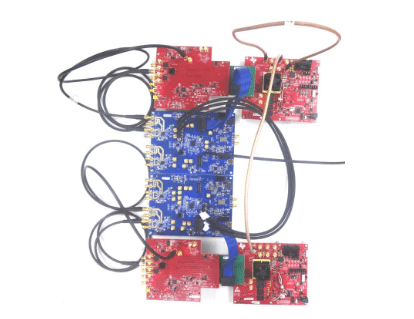//php echo do_shortcode(‘[responsivevoice_button voice=”US English Male” buttontext=”Listen to Post”]’) ?>
Since last fall, rumors have been circulating about Graphcore: having raised huge amounts of funding from some key strategic investors, the company was close to running out of funding and was looking for a buyer. At the time, whispers suggested Arm was the potential acquiror. Rumors of a deal have continued to circulate, though no information has yet been made public.
However, in recent weeks, several EE Times sources have indicated that a deal is about to be closed. Our sources indicate the deal is a possible acqui-hire by SoftBank, with a price tag equating to around $1 million per engineer—or somewhere between $400 million and $500 million total.
Sources also suggest that Graphcore is not being acquired for its products, the IPU chip, and Poplar software stack, but for the team and expertise—which could provide a challenge in the long-term to market leader Nvidia.
Graphcore had raised $767 million in funding from high profile strategic investors, including Microsoft and BMW Ventures. The company’s last published annual report for the year ended Dec. 31, 2022 indicated a loss of $204 million with operating expenses of $207 million and $157 million in cash.
What could SoftBank be up to?
Analysis by Sally Ward-Foxton
Bloomberg reported in February that SoftBank is looking to build an AI chip venture. Why would anyone want to start a data center AI chip company today? Nvidia has become one of the most valuable companies in the world based largely on data center AI, and at first glance, it looks like this is a huge market that is ripe for disruption—Nvidia holds practically the entirety of this multi-billion dollar market today.
However, it is not like there are not any existing challengers—giants AMD and Intel have competitive offerings, and there are half a dozen startups with products, including Graphcore, with years of development already underway. The fact that all of these challengers, whether big or small, have singularly failed to gain significant share from Nvidia so far speaks volumes. Nvidia is seen to be so far ahead that its lead is practically insurmountable. The only chink in its armor is that the GPU giant is something of a victim of its own success; prices are high and supply is short. Those seeking to build clouds and supercomputers face a hefty bill and a long waiting list for latest-gen tech.
Everybody wants an Nvidia competitor—no-one wants to be solely dependent on Nvidia’s performant but expensive, hard to get hardware. But so far, no-one is willing to buy from Nvidia’s existing competition in any volume.
The situation is so dire that rather than go with hardware from AMD, Intel, or any startup, hyperscalers like Google, Amazon Web Services, Meta, and Microsoft (and reportedly, Apple) are designing their own AI accelerators in-house, tailoring chips for their own internal workloads and moving to control more of their supply chain. However, this strategy has its own challenges, including but not limited to fab capacity and lead times at advanced nodes, and shortage of AI accelerator chip design talent.
So what could SoftBank possibly do differently to so many others that would make an Nvidia-killer? Here are a few suggestions.
- It could—somehow—come to the market with a fully-formed software offering that rivals Nvidia’s CUDA in flexibility, applicability and usability, while fitting seamlessly into existing AI infrastructure. Ideally, it would also be open source. (This would a Herculean task to say the least; software maturity takes time.)
- It could ease supply chain bottlenecks by utilizing non-cutting edge process nodes, and/or foundries with more availability than market leader TSMC., which fabs Nvidia’s cutting-edge GPUs and CPUs. Ideally, it would also remove dependence on HBM, since the supply of HBM and assembly of its advanced packaging is a currently a big bottleneck (hint: Graphcore’s IPU uses DDR only).
- It could be cheaper than Nvidia, though competing on price has not worked for Intel-Habana Labs (or Graphcore) so far.
- It could incorporate outside of the United States to give it more open access to markets Nvidia cannot serve with its biggest chips, like China (though there is no shortage of home-grown competition over there), or to more easily serve other parts of the world, where exports are possible but restricted. Ideally, it would choose a country whose government will offer a tasty subsidy to do so, and/or that has a surplus of design engineering talent.
- It could leverage some kind of synergy with Arm, where SoftBank is a majority shareholder, thus lining its own pockets in the process. What form such a synergy could take is unclear. Arm does not offer data center-class NPU or GPU IP today that could be used to build an Nvidia-killing AI accelerator. What Arm does offer is IP for data center CPUs (see: Ampere, Nvidia Grace) and reference designs for its hyperscale customers building their own data center CPUs (see: Microsoft Cobalt, AWS Graviton). Some kind of third-party development of an Arm-based AI accelerator would seem unlikely; it is debatable whether an Arm architecture license would allow enough flexibility for this.
If SoftBank is looking at a new silicon venture based on some combination of the above, acquiring Graphcore’s engineering talent could certainly be a useful head start. But a head start enough to take on Nvidia? There would have to be something very special in the secret sauce, too.
—Editors Note: “Graphcore declined to comment. EE Times had not heard back from SoftBank for comment before publication.”









